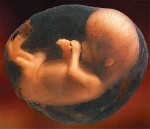 |
 |
Have we entered the era of the 1 year sequencer release cycle? *Updated*
Tuesday, January 13, 2015
Illumina's $1000 Genome*
Wednesday, January 15, 2014
A coming of age for PacBio and long read sequencing? #AGBT13
Saturday, February 23, 2013
Next Generation Sequencing rapidly moves from the bench to the bedside #AGBT13
Friday, February 22, 2013
#AGBT day one talks and observations: WES/WGS, kissing snails, Poo bacteria sequencing
Wednesday, February 20, 2013
Got fetal DNA on the brain?
Friday, September 28, 2012
Memes about 'junk DNA' miss the mark on paradigm shifting science
Friday, September 7, 2012
So, you've dropped a cryovial or lost a sample box in your liquid nitrogen container...now what?
Thursday, August 16, 2012
A peril of "Open" science: Premature reporting on the death of #ArsenicLife
Thursday, February 2, 2012
Antineoplastons? You gotta be kidding me!
Thursday, October 27, 2011
YouTube: Just a (PhD) Dream
Thursday, October 27, 2011
Slides - From the Bench to the Blogosphere: Why every lab should be writing a science blog
Wednesday, October 19, 2011
Fact Checking AARP: Why soundbytes about shrimp on treadmills and pickle technology are misleading
Monday, October 17, 2011
MHV68: Mouse herpes, not mouth herpes, but just as important
Monday, October 17, 2011
@DonorsChoose update: Pictures of the materials we bought being used!!
Friday, October 14, 2011
Is this supposed to be a feature, @NPGnews ?
Tuesday, October 4, 2011
A dose of batshit crazy: Bachmann would drill in the everglades if elected president
Monday, August 29, 2011
A true day in lab
Wednesday, August 10, 2011
A day in the lab...
Monday, August 8, 2011
University of Iowa holds Science Writing Symposium
Tuesday, April 26, 2011
Sonication success??
Monday, April 18, 2011
Circle of life
Thursday, March 17, 2011
Curing a plague: Cryptocaryon irritans
Wednesday, March 9, 2011
Video: First new fish in 6 months!!
Wednesday, March 2, 2011
The first step is the most important
Thursday, December 30, 2010
Have we really found a stem cell cure for HIV?
Wednesday, December 15, 2010
This paper saved my graduate career
Tuesday, December 14, 2010
Valium or Sex: How do you like your science promotion
Tuesday, November 23, 2010
A wedding pic.
Tuesday, November 16, 2010
To rule by terror
Tuesday, November 9, 2010
Summary Feed: What I would be doing if I wasn't doing science
Wednesday, October 6, 2010
"You have more Hobbies than anyone I know"
Tuesday, October 5, 2010
Hiccupping Hubris
Wednesday, September 22, 2010
A death in the family :(
Monday, September 20, 2010
The new lab fish!
Friday, September 10, 2010
What I wish I knew...Before applying to graduate school
Tuesday, September 7, 2010
Stopping viruses by targeting human proteins
Tuesday, September 7, 2010
 |
 |
 |
 |
Brian Krueger, PhD
Columbia University Medical Center
New York NY USA
Brian Krueger is the owner, creator and coder of LabSpaces by night and Next Generation Sequencer by day. He is currently the Director of Genomic Analysis and Technical Operations for the Institute for Genomic Medicine at Columbia University Medical Center. In his blog you will find articles about technology, molecular biology, and editorial comments on the current state of science on the internet.
My posts are presented as opinion and commentary and do not represent the views of LabSpaces Productions, LLC, my employer, or my educational institution.
Please wait while my tweets load 
 |
 |
youtube sequencing genetics technology conference wedding pictures not science contest science promotion outreach internet cheerleaders rock stars lab science tips and tricks chip-seq science politics herpesviruses
 |
 |
 |
 |
How AAAS and Science magazine really feel about sexual harassment cases in science
I'm beginning a new project in lab. It's a series of ChIP-seq experiments and the first step to doing ChIP-seq properly is optimizing sonication conditions. Here's a trial run with the sonicator I plan on using. The DNA shown in the gel is from cells containing latent herpes virus. We're looking to shear the DNA so that the bulk of it is between 100 and 600bp. For ChIP-seq we extract and purify the DNA in the 100-300 range in the gel. Looks like about 13 cycles of sonication should do (sonication past this point doesn't result in smaller fragments, don't want to risk over sonicating)! Actually, I think I'm going to do this again on Monday. I looked back at some old data and I should be able to get the fragment sizes a bit smaller by increasing the pulse time. I'll post an update soon!

This post has been viewed: 2884 time(s)
 |
 |
No, never heard of it! Fancy places have those new Covaris automatic sonicators, but I don't have access to one :(
I am thinking just using 0.1mm glass beads and a vortex to shear it. Or if you have a high powered bead beater like a FastPrep, you could shear the DNA down pretty quickly.
What about using 4 base cutting restriction enzymes?
The sonicator is probably the lease expensive way but the bead beating is easier for multiple samples.
My cursory google search for ChIP and bead beating turns up a couple of protocols that use it for ChIP in organisms with cell walls. It's used as a mechanism to lyse the cells, not to shear the DNA. All of the protocols I found have a sonication or restriction digest step for DNA shearing.
Here are some good techniques to shear DNA of which I believe bead beating is a part of.
http://linkinghub.elsevier.com/retrieve/pii/S0968000497010803
Good luck with your project Brian. ChIP was the bane of my lab life! It worked great for one transcription, but not at all for the other two. However, all my problems were related to protein stability, so as long as you can do regular ChIP ok ChIP-seq should work for you. Regards the size, I think you just have to play with your protocol until you get it right (just like you are doing).
Thanks for the link GR. I'll take a look once I can acres the paper. It's behind a paywall :(
To shear our DNA we used a nebulization method. Worked like a charm if you can get your hands on a nebulization cup and a tank of nitrogen. The protocol I link to says 700-1300bp in size, but you can get it lower by altering viscosity and neb times.
http://cshprotocols.cshlp.org/cgi/content/abstract/2006/4/pdb.prot4539
Thanks, TJ. I've heard of nebulization before, but I don't think we have one around.
I re-did the sonication today. I'm reversing the crosslinks tonight and I should have another cool looking gel tomorrow afternoon. I really wish I had a 15cm PAGE apparatus in this lab. The gels look much tighter.
The "device" itself is very simple. A nitrogen tank with tubing and a nebulization cup. The cups can usually be purchased from any medical store supplier. The nebulizer cups we used to use were from IPI Medical Products, based out of Chicago (part #4101). It needs to be modified slightly, but the protocol can be found here (http://www.genome.ou.edu/protocol_book/protocol_partII.html). I used one cup for my entire grad school career ... cost me around $7 (sans nitrogen tank and nalgene tubing).
 |
 |
 |
 |













Jaeson, that's not true at most places. Top tier, sure, but 1100+ should get you past the first filter of most PhD programs in the sciences. . . .Read More
All I can say is that GRE's really do matter at the University of California....I had amazing grades, as well as a Master's degree with stellar grades, government scholarships, publication, confere. . .Read More
Hi Brian, I am certainly interested in both continuity and accuracy of PacBio sequencing. However, I no longer fear the 15% error rate like I first did, because we have more-or-less worked . . .Read More
Great stuff Jeremy! You bring up good points about gaps and bioinformatics. Despite the advances in technology, there is a lot of extra work that goes into assembling a de novo genome on the ba. . .Read More
Brian,I don't know why shatz doesn't appear to be concerned about the accuracy of Pacbio for plant applications. You would have to ask him. We operate in different spaces- shatz is concerned a. . .Read More